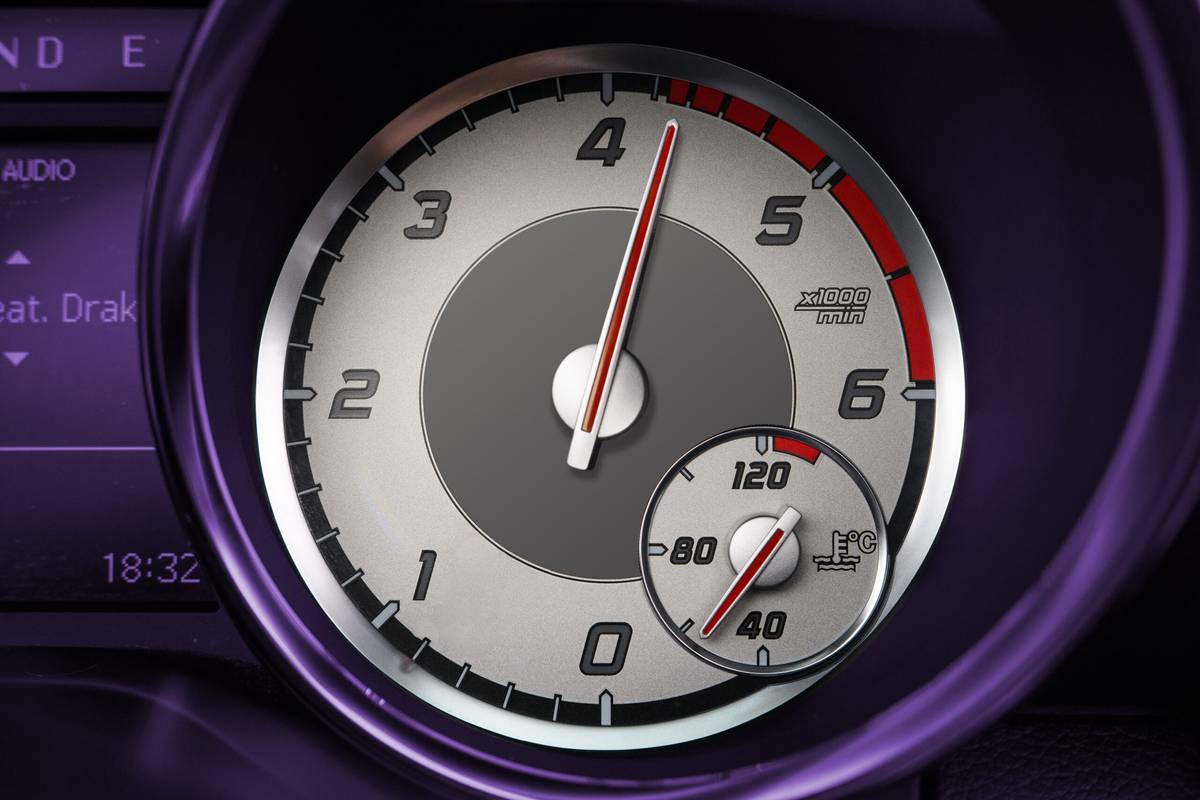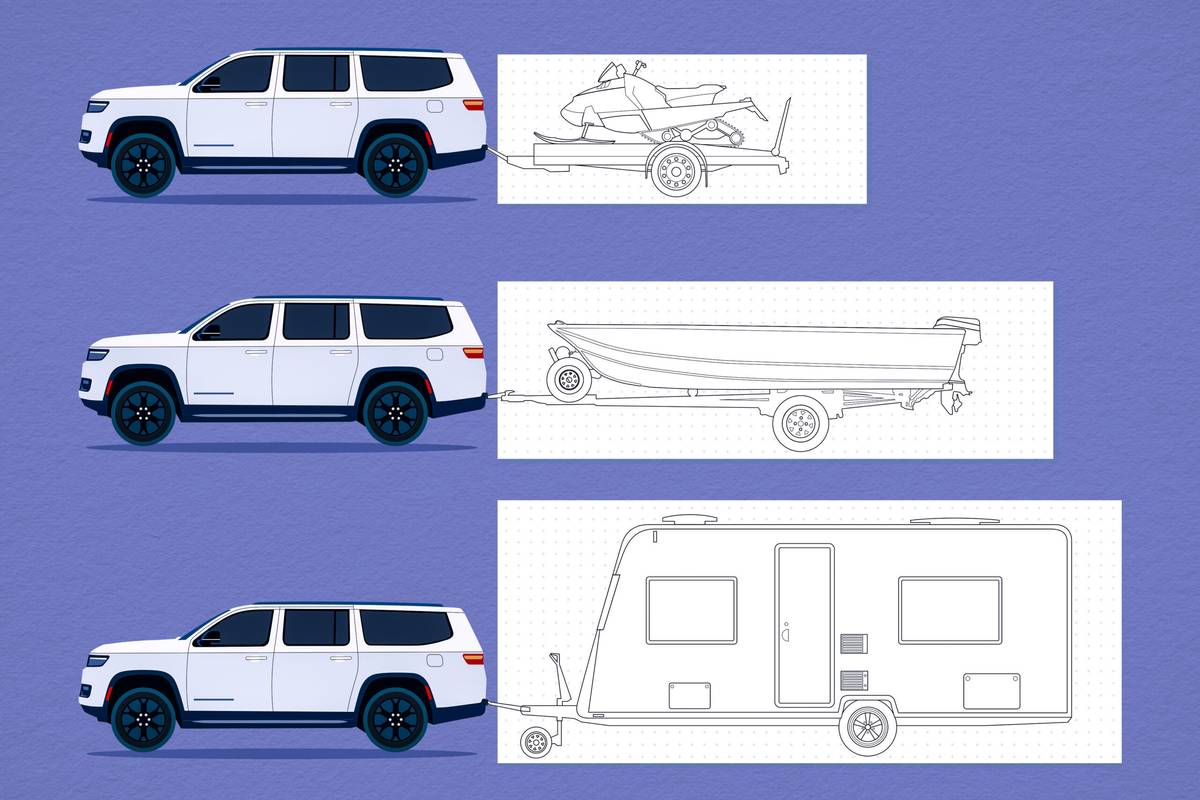Why Is My Car Idling High?

While it’s normal for a car to be idling high when it’s first started, if the idle doesn’t drop to normal after a minute or two, something’s probably wrong.
That initial temporary high idle, which is usually at about 1500 rpm, makes the engine and its oil warm up more quickly, allowing both to work better. In really cold weather, that high idle may persist for a couple of minutes before it gradually drops down to normal, typically to about 800 rpm.
But if the idle doesn’t drop down, there are a number of things that could be wrong. Some are fairly simple to at least check, but other causes will take equipment to diagnose and likely some tools and knowledge to fix.
Related: Should I Worry About How Hot My Engine Is Running?
Simple Checks for What’s Causing a High Idle
The first thing you can do to diagnose the cause of a high idle is check your gauges and instrument panel warning lights.
If the coolant temperature gauge is reading high, you might be low on coolant or have some other coolant-related problem. Or, if the battery gauge is reading low, you may have a problem in the electrical or charging system. Though it may be a long shot that either would cause your high idle, they should be corrected anyway.
Next would be to check for an illuminated check-engine light. Many malfunctions will cause it to illuminate; to figure out which malfunction is triggering it, you’ll need to use an onboard diagnostics system (or OBD II) code reader or scan tool. If you don’t have one, some auto parts stores will run a test for you, and it’s a staple at any good repair shop. For instance, the test may turn up a bad sensor that could be causing the problem.
Fairly Simple, But Requiring Some Tools and Knowledge
One part associated with your engine’s idle speed that might be pinpointed by the diagnostic test is the idle air control valve. Note that it may go by other names, and some cars — especially newer ones — might not have one. If your car does, the idle air control valve allows more air (which is later mixed with fuel) to go into the engine when it’s cold to raise the idle speed. It’s usually fairly easy to find; an internet search for, “How do you check the idle air control valve on a (year/make/model)?” will likely tell you if your car has one, and if so, where it is, how to check it and perhaps how to clean it. (It’s typically near the junction of where the air inlet tube from the air cleaner meets with the intake manifold.) If you’re comfortable working on engines, this procedure is usually not very difficult.
The idle air control valve typically consists of an actuator (a motor or solenoid) that opens and closes a valve when the car’s computer tells it to do so. There can be a problem with the actuator, valve — which can get frozen in place by carbon deposits — or signal from the computer. The valve is fairly easy to clean, and replacing the whole unit (you will have to take it off to clean the valve anyway) is just as easy — though more expensive. Diagnosing a computer malfunction, however, is probably best left to a professional. Note that there’s often a fuse or relay in the electrical circuit that feeds power to the valve’s actuator, and if that fuse or relay goes bad, no power would flow to the actuator. While this could also result in too low of a cold idle speed, it’s worth checking.
Another possibility for a high idle is dirt buildup in the throttle body that’s keeping the throttle plate from fully closing. Cleaning the throttle body is likewise something that can be done yourself if you’re used to working on engines.
The throttle position sensor is another possible cause of a high idle. As the name implies, the TPS is supposed to tell the computer how far the throttle is open, but if there’s a malfunction in the TPS, it can keep the throttle from completely closing. An internet search can tell you how to test the TPS on your car.
More From Cars.com:
- How to Check Your Car’s Engine Coolant
- How Do I Find Out if a Car Is Still Under Warranty?
- Why Does My Car Make a Squealing Noise?
- Do I Need to Use Engine Oil or Fuel Additives?
- More Service News
The Not-So-Simple Checks
From there it gets trickier.
Another fairly common cause of a high idle is a vacuum leak. This can come from a bad hose, leaking gasket, or cracked plastic or metal component, such as an intake manifold. While hoses and gaskets are usually relatively inexpensive, gaskets, especially, can require a lot of labor to replace. Components such as an intake manifold can add significant expense to that procedure, as well.
Vacuum leaks in general can be very difficult to track down, though — if you’re lucky, they may be accompanied by a hissing sound. If you hear one, putting one end of a hose (such as a section of garden hose) against your ear and moving the other end around near where you hear the hissing may help locate the leak. (Be careful not to get near any spinning components, especially the fan or serpentine belt.) In many cases, however, this is where it might be necessary to seek professional help.
While a high idle might seem more of an annoyance than a real problem, it can waste fuel and cause undue stress on the car’s powertrain. But more importantly, it can be a safety issue, as the high idle can more easily overcome a light touch on the brakes when stopped, causing the car to jump forward more than expected if the brakes are released.
Related Video:
Cars.com’s Editorial department is your source for automotive news and reviews. In line with Cars.com’s long-standing ethics policy, editors and reviewers don’t accept gifts or free trips from automakers. The Editorial department is independent of Cars.com’s advertising, sales and sponsored content departments.
Featured stories



